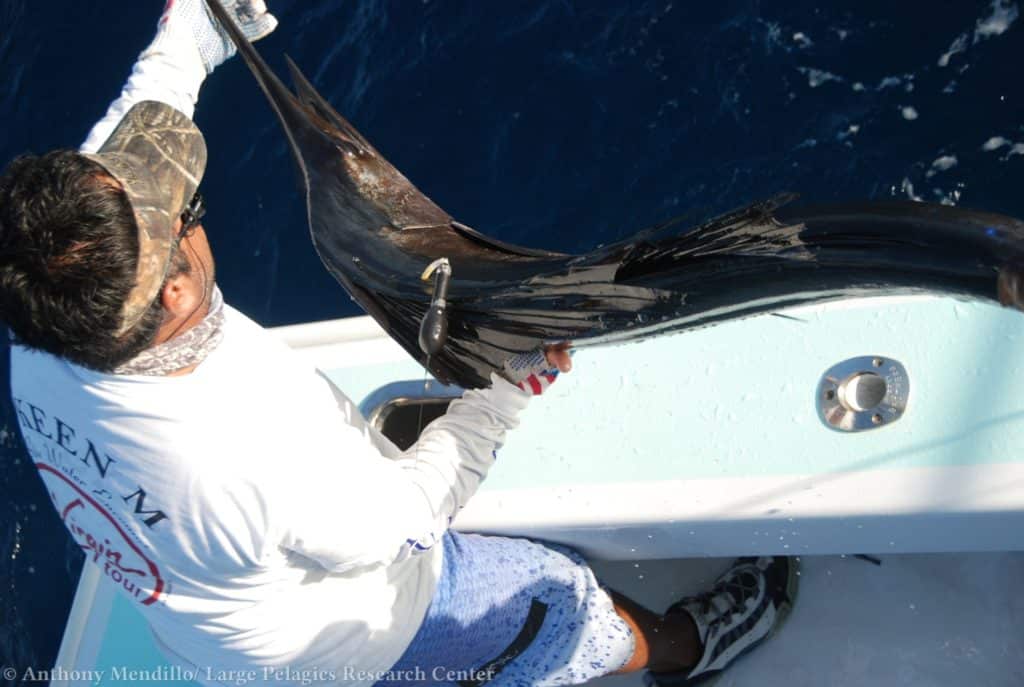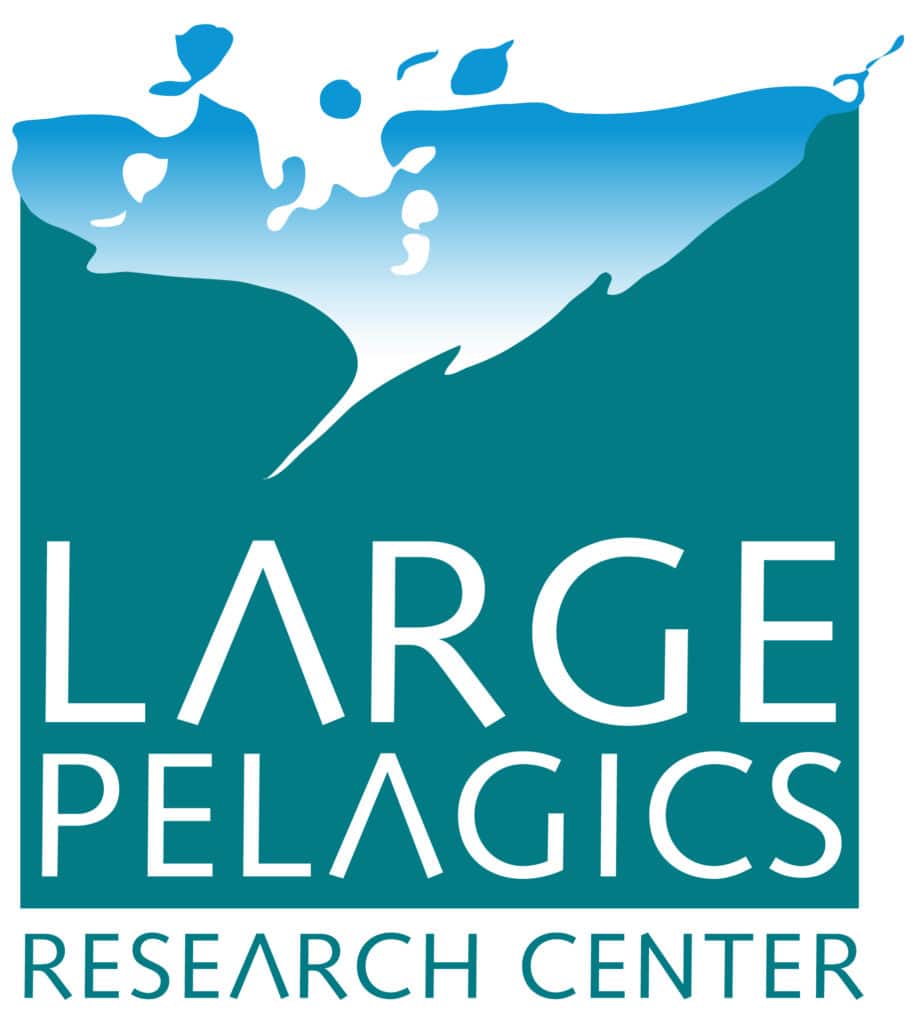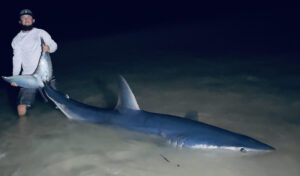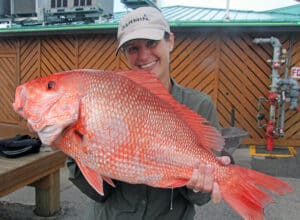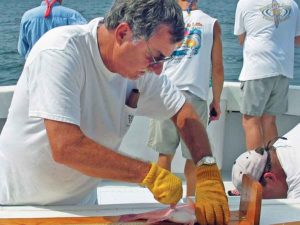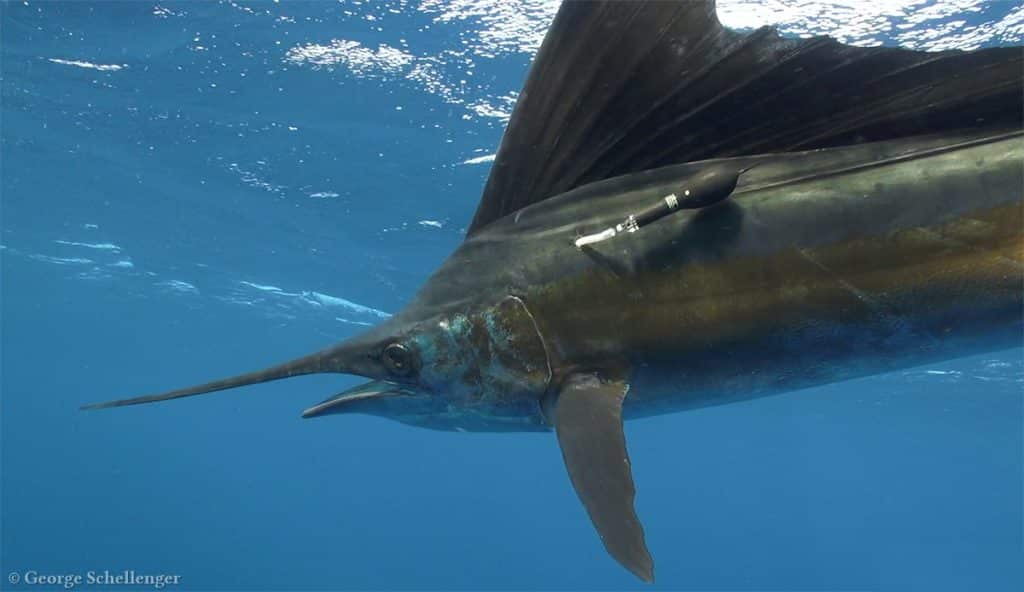
Tracking Migrations
A new study of the movements and behavior of Atlantic sailfish by the UMass Boston’s Large Pelagics Research Center, based on a year’s worth of satellite-tag data has turned conventional thinking (based on conventional-tag data) on its head.
The old wisdom: Sailfish are home bodies, tending toward residency within particular, well-known areas such as South Florida or Isla Mujeres, Mexico.
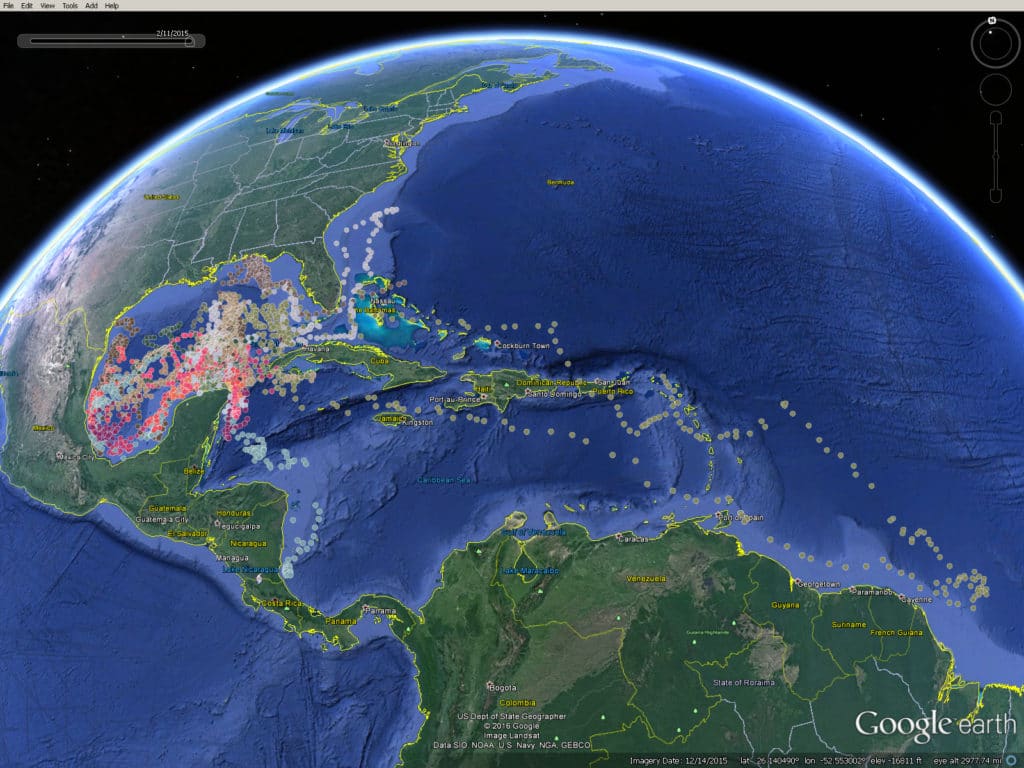
The new, more accurate wisdom: Sails migrate, often between those identified hot spots. Over the course of the year, sails tagged off Isla Mujeres in the winter and spring went sort of all over, variously dispersing north to productive grounds in the Gulf of Mexico, east to the Caribbean Sea, and south to the South American coast.
The report, Sailfish migrations connect productive coastal areas in the West Atlantic Ocean, appears on nature.com in Scientific Reports, December 2016 (Chi Hin Lam et. al.).
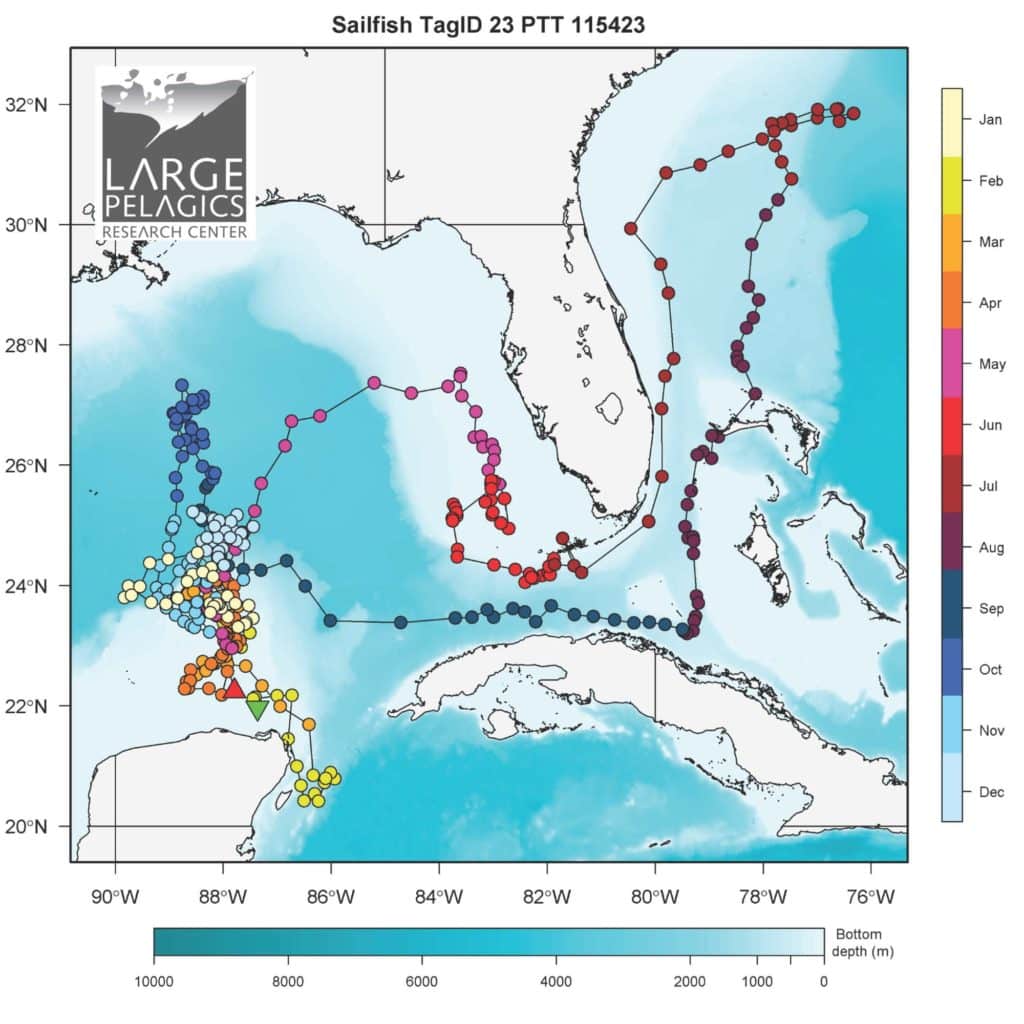
“We tagged this first sailfish off the Yucatan, where it hung out for a short while,” says Tim Lam, PhD, of the Large Pelagics Research Center, of the map above. “It then traveled to the center of the Gulf of Mexico before heading west past Cuba and eventually ended up off the Florida and Georgia coasts.”
The sailfish decided after that to make the trek back to the Yucatan exactly one year later. “Our PSAT tag popped off 18 miles (29 kilometers) from where this sailfish was originally tagged!
“This sailfish definitely knew where it was going,” Lam says, “as if it has its own GPS and Google Maps. Yes! Without a smartphone.”
Although the unprecedented study has shown sailfish to make seasonal migrations connecting multiple coastal areas in the western Atlantic, no trans-Atlantic movement was documented. So far, such trans-oceanic crossings by sails are unknown.
Tracking Behavior
This ambitious study, tagging sails with pop-up archival and satellite tags, also tracked the behavior of sailfish to uncover little-known secrets.
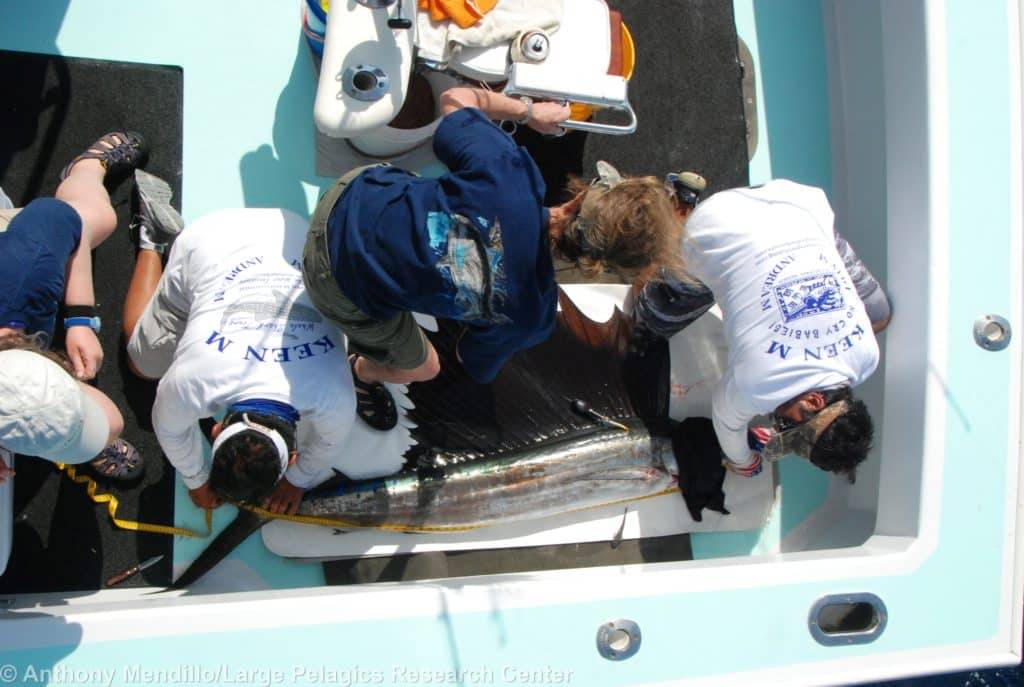
Among the notable discoveries, most of the tagged sailfish spent most of their time from the surface to about 150 feet down. But at least one fish dived to well over 1,500 feet, where water temperatures were barely over 50 degrees F. And all fish showed activity during darkness (and during all moon phases).
